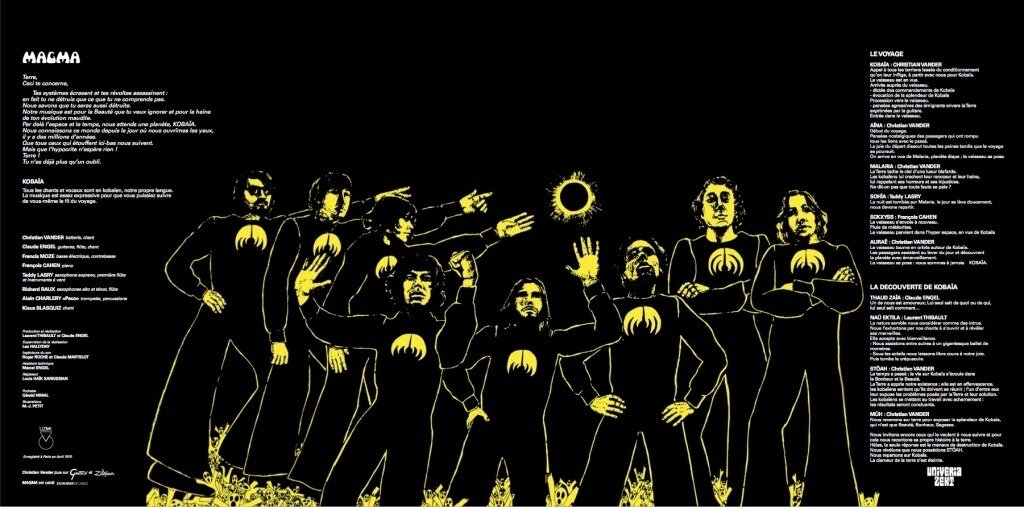


project_muse_362789
The-noetic-connection-synaesthesia-psychedelics-and-language





Morris-The-use-of-veiled-language-in-Soqotri-poetry
Hybridity_versus_Revivability

Chapitre 1 : De la science-fiction à la linguistique-fiction
Chapitre 2 : Origine et évolution des langues naturelles
Chapitre 3 : Des langues artificielles, mais pour quoi faire
Chapitre 4 : Les éléments constitutifs d’une langue
Chapitre 5 : Premier contact avec des extraterrestres







If Aliens Contact Us, We Won’t Understand

Alien interpreters : how linguists would talk to extraterrestrials



Conlang is a mailing list for discussing constructed and artificial languages.
Discussions often include linguistical features and details about natural and constructed languages. The focus is on technical discussion and personal preferences and views of our enthusiastic conlangers rather than on advocacy, especially of international auxiliary languages (IALs), which are better discussed on the Auxlang list instead.
The flag shows the sun on the horizon behind a layered tower. The colours represent creative energy, and the layers of the tower imply that a conlang is built piece by piece, never completed. The tower itself also alludes to the Tower of Babel, as it has long been a tradition to demonstrate a constructed language by translating the Babel legend. The winning design was drawn by Christian Thalmann, who introduced the layers. The idea of including the Tower of Babel on the flag had been introduced by Jan van Steenbergen, and the idea of placing the sun on the horizon behind it by Leland Paul. The idea of having the rising sun on the flag had been introduced by David Peterson, who saw it as representing the rise of conlanging from obscurity to popularity and notoriety.
Segments-01-April-2021-rconlangsSegments-02-July-2021-Verbs-rconlangs-v1.2
Segments-03-October-2021-Nouns-rconlangs-v1.1

Ce n’est pas grand-chose hein. Pour les neuf chansons que compte le disque, le dictionnaire tient sur deux ou trois pages A4. J’aime l’idée que ces morceaux aient du sens mais je ne veux pas nécessairement que les gens le comprennent. J’ai essayé d’inventer des mots dont les sonorités me semblent douces. Des mots qui me plaisent, qui me paraissent appropriés aux morceaux. Le vocabulaire part d’une émotion, d’une esthétique, d’un aspect purement musical auquel j’apporte par la suite un sens en fonction de ce qu’ils m’évoquent. Je n’écris jamais les textes en français d’abord. Une langue imaginaire permet de ne faire aucun compromis entre les sons et leur sens. Si à un moment je me sens coincé, je peux toujours créer des synonymes. Je ne m’inspire pas de l’italien, du chinois ou de que sais-je encore. Je cherche juste à ce que ça fasse joli avec ma musique. C’est le seul et unique objectif. Je ne sais d’ailleurs pas à quelles langues rattacher et raccrocher le Galionka. Certainement pas à l’allemand ou au néerlandais en tout cas.”

Le kobaïen est un ensemble de sons destiné, à l’origine, à donner l’impression d’un langage articulé préexistant. Utilisé par son créateur, le batteur-chanteur-fondateur du groupe Magma, Christian Vander, dans le cadre de ses compositions, il remplit dans une certaine mesure la fonction d’un langage liturgique ésotérique. Contrairement à l’espéranto ou au volapük, il ne s’agit donc pas d’une langue construite à proprement parler, dans la mesure où sa syntaxe demeure largement incomplète et son lexique, toujours en cours d’élaboration.
D’un point de vue intradiégétique, une genèse fictive du kobaïen proposée par Christian Vander dans le 1er album de Magma, Kobaïa, précise qu’il s’agit d’un langage extraterrestre, c’est-à-dire parlé sur une autre planète, en l’occurrence Kobaïa.
Belial Blog : En direct de Kobaïa. Rencontre avec Christian Vander
:format(jpeg):mode_rgb():quality(90)/discogs-images/R-4531465-1367537454-9810.jpeg.jpg)
Mythos – In Veiled Language (True Version) (1995)
[Teemu Hautaniemi]
I don`t wish you protection of mind and body. I don`t wish you a life without pain and bewilderment. What would you do with a life like that, like what? But sometimes in some branch there you would have a presentiment. Just maybe this is the day, You won`t forget after everything will be in a different way? In a quiet moment in a quiet places, suddenly understand, know what`s true… We have talked about it!!! Just maybe this is the day, You won`t forget after everything will be in a different way ? Someone carries and brings you towards your end…

The tradition of singing in invented (or “constructed”) languages goes back at least as far as the mystic and nun Hildegard von Bingen. One of the more important composers of the 12th century, Bingen also developed one of the first invented languages, Lingua Ignota, going so far as to create a new alphabet for it.







